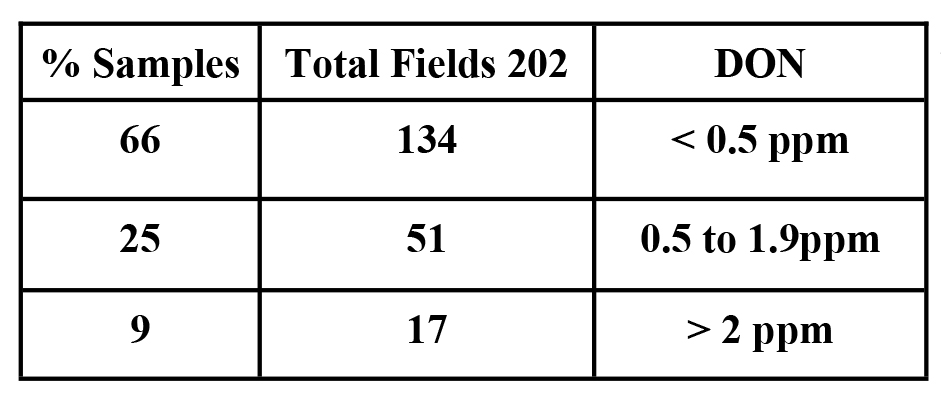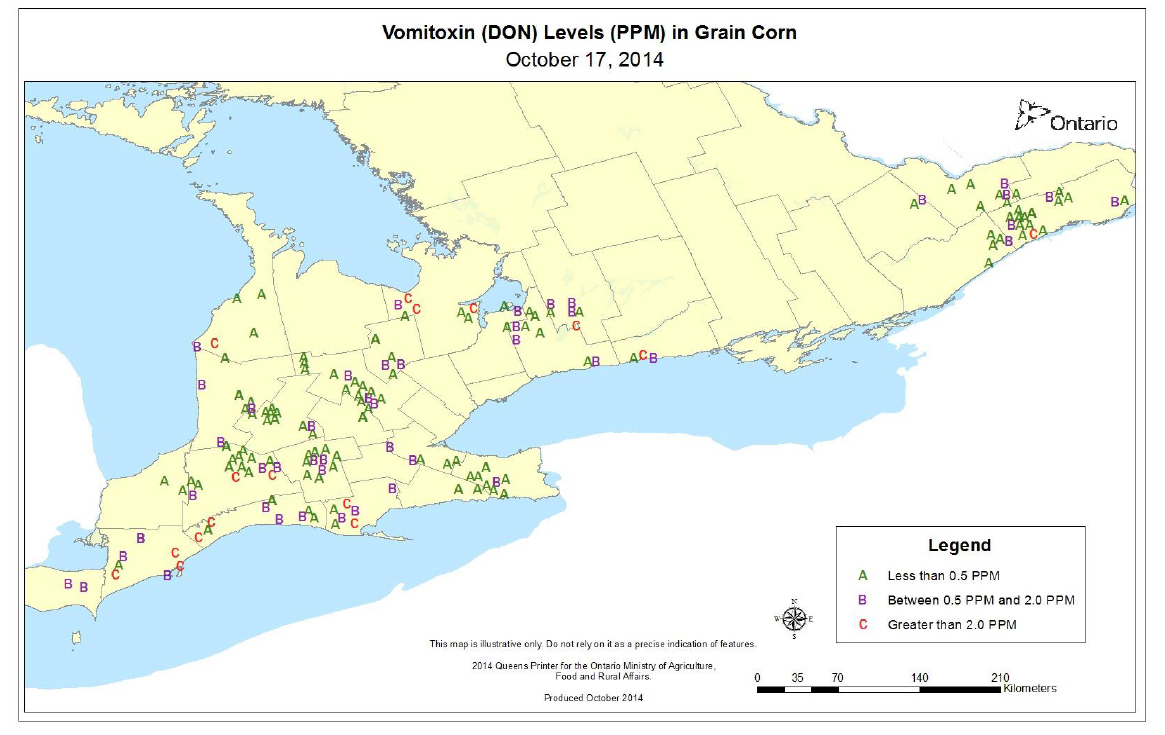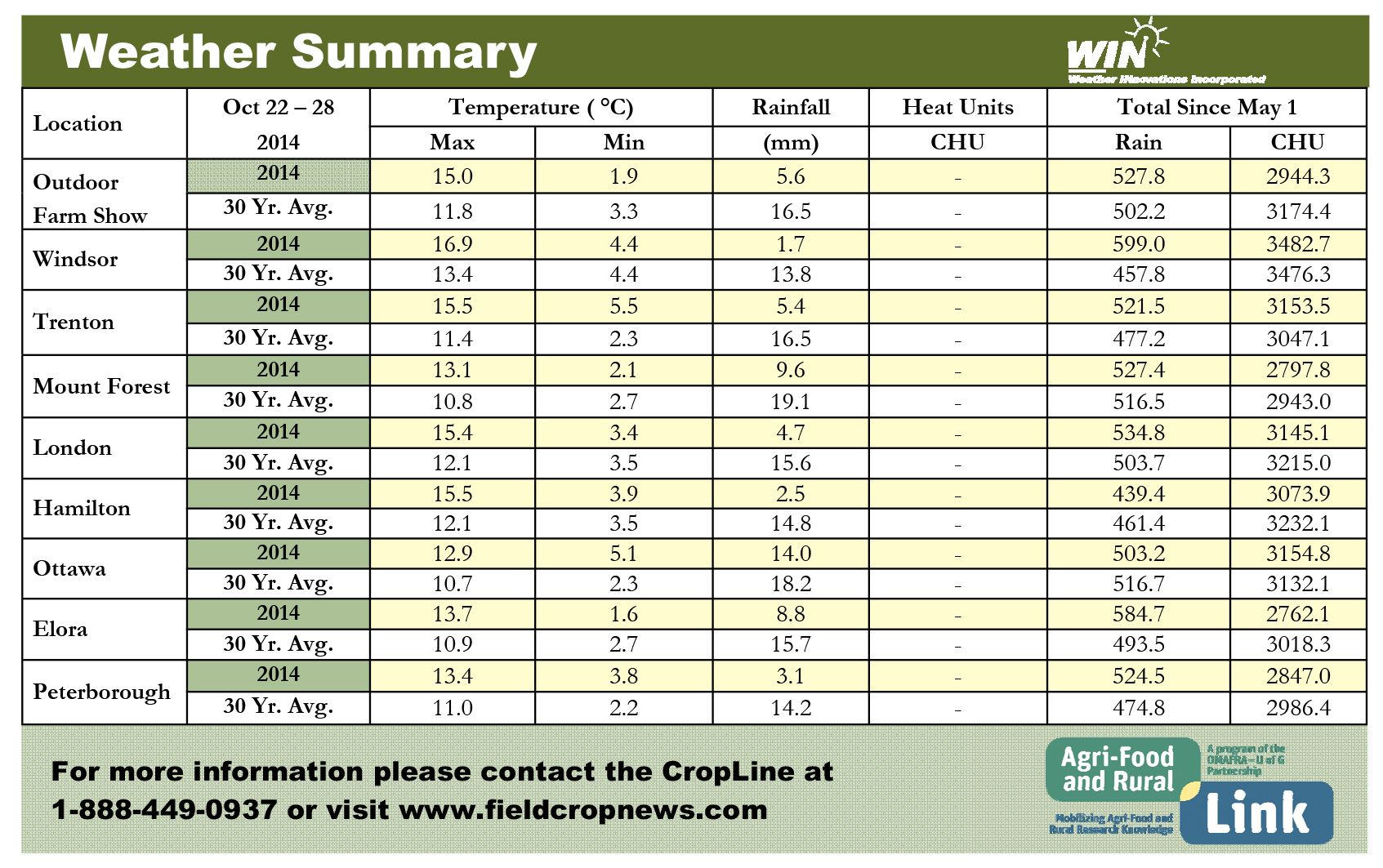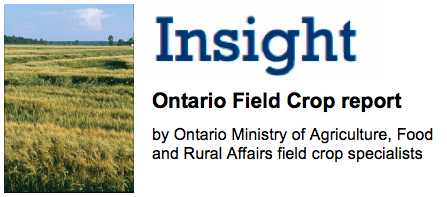2014 OMAFRA Grain Corn Ear Mould and Vomitoxin Survey
Greg Stewart, Corn Specialist and Albert Tenuta, Pathologist
The OMAFRA Field Crops team has completed a survey of the Ontario corn crop to determine ear mould incidence and mycotoxins levels in the grain. Mycotoxins, especially vomitoxin (DON) produced primarily by Gibberella/Fusarium ear moulds, are grading factors and can be disruptive when fed to livestock, especially hogs.
 202 corn samples were collected during October 14—17, 2014 from fields across the province. Dried and shelled samples from each field were sent to A&L Laboratories in London for vomitoxin (DON) analysis (See table). These results show an increase in vomitoxin levels compared with the 2013 survey where only 2% of the samples registered a DON level of more than 2.0 PPM. These are significantly lower then the 2011 survey when 23% of the samples registered 2.0 PPM DON or higher.
202 corn samples were collected during October 14—17, 2014 from fields across the province. Dried and shelled samples from each field were sent to A&L Laboratories in London for vomitoxin (DON) analysis (See table). These results show an increase in vomitoxin levels compared with the 2013 survey where only 2% of the samples registered a DON level of more than 2.0 PPM. These are significantly lower then the 2011 survey when 23% of the samples registered 2.0 PPM DON or higher.
With 91% of the samples testing below 2.0 PPM (see map) it appears that the 2014 corn crop should be able to move through the system with few concerns over DON levels. However, the 2014 survey shows that increased diligence is needed in monitoring fields for ear mould, insect damage and elevated DON levels. In particular, high DON concentrations in this year’s survey (>5.0 PPM)  appear to be closely associated with ears that had Western Bean Cutworm (WBC) feeding. WBC damage fosters the development of ear moulds and toxin development.
appear to be closely associated with ears that had Western Bean Cutworm (WBC) feeding. WBC damage fosters the development of ear moulds and toxin development.
When ear rot is present, the following harvest, storage and feeding precautions are advisable (Pub 811 OMAFRA Agronomy Guide):
- Harvest as early as possible especially susceptible hybrids.
- If insect or bird damage is evident, harvest outside damaged rows separately. Keep and handle the grain from these rows separately.
- Adjust harvest equipment to minimize damage to corn. Clean corn thoroughly to remove pieces of cob, small kernels and red dog.
- Clean bins before storing new grain and cool the grain after drying.
- Check stored grain often for temperature, wet spots, insects and mould growth.
- Exercise caution in feeding mouldy corn to livestock, especially to hogs. Pink or reddish moulds are particularly harmful. Test suspect samples for toxins.
Moving Forward and Acknowledgements
The survey indicates that on average the 2014 Ontario corn crop is relatively low in ear moulds and vomitoxin. Stakeholders should be on the lookout for fields with ear damage (Western Bean Cutworm injury or bird feeding) as DON levels may be distinctly higher in those fields. In addition, late planted and/or frost injured fields where husk cover is tight may be at risk for mould and DON levels to increase. Appreciation is extended to the Grain Farmers of Ontario and A&L Canada Laboratories Inc. for their support of this survey and rapid analysis of the samples.

| Attachment | Size |
|---|---|
| 424.21 KB |



